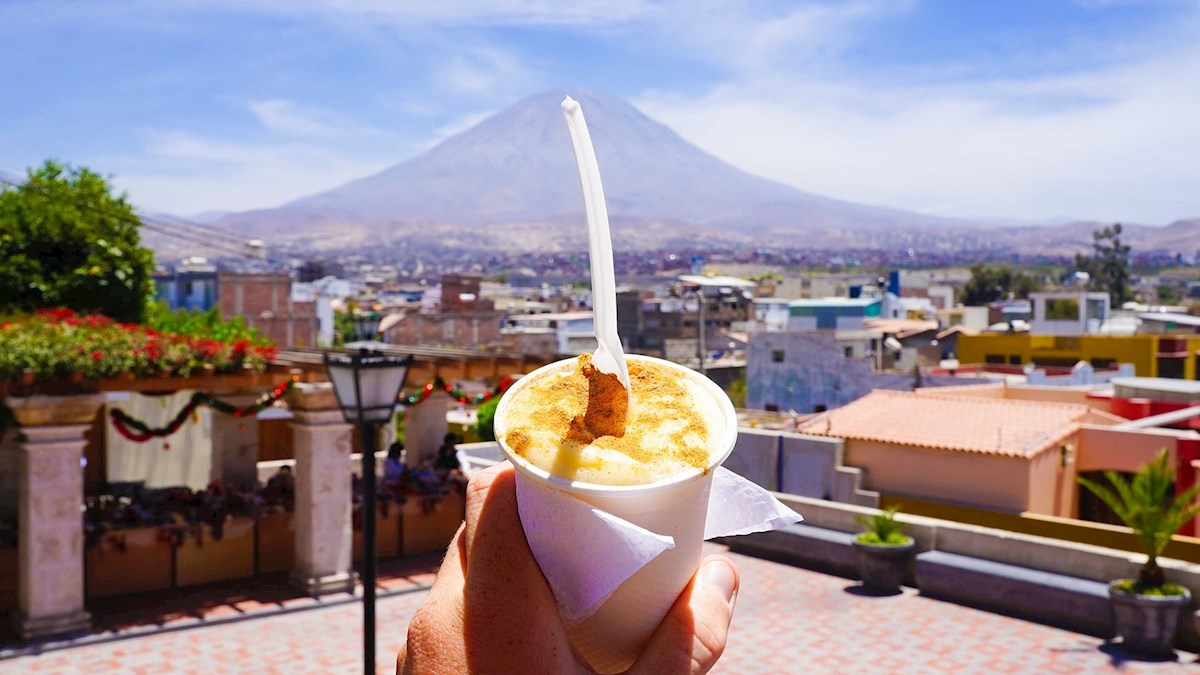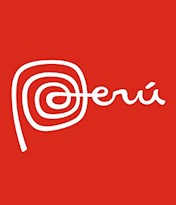Arequipa, often referred to as "The White City", is an ancient city founded in 1540 by the Spanish conquistador Francisco Pizarro, under the name of "Beautiful Villa of Our Lady of the Assumption". Nestled in the southern part of Peru at the foot of the El Misti volcano, Arequipa is the country's second-largest city, and is renowned for its colonial architecture made from white volcanic sillar stone. Add to that the breathtaking natural wonders that surround it and the unique cuisine influenced by several cultures, Arequipa is truly a traveler's paradise.
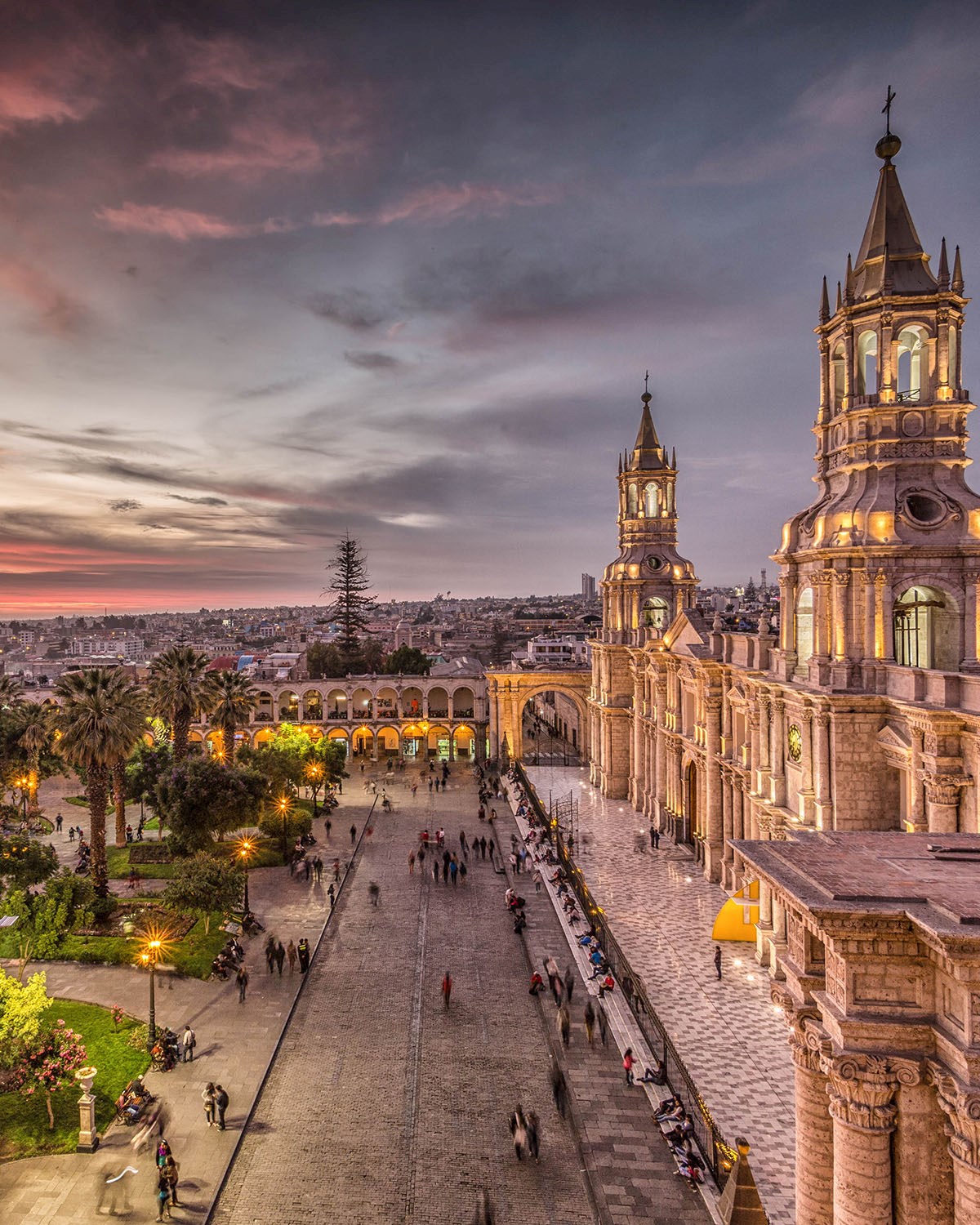 Arequipa's historical centre - Credits: Shutterstock
Arequipa's historical centre - Credits: Shutterstock
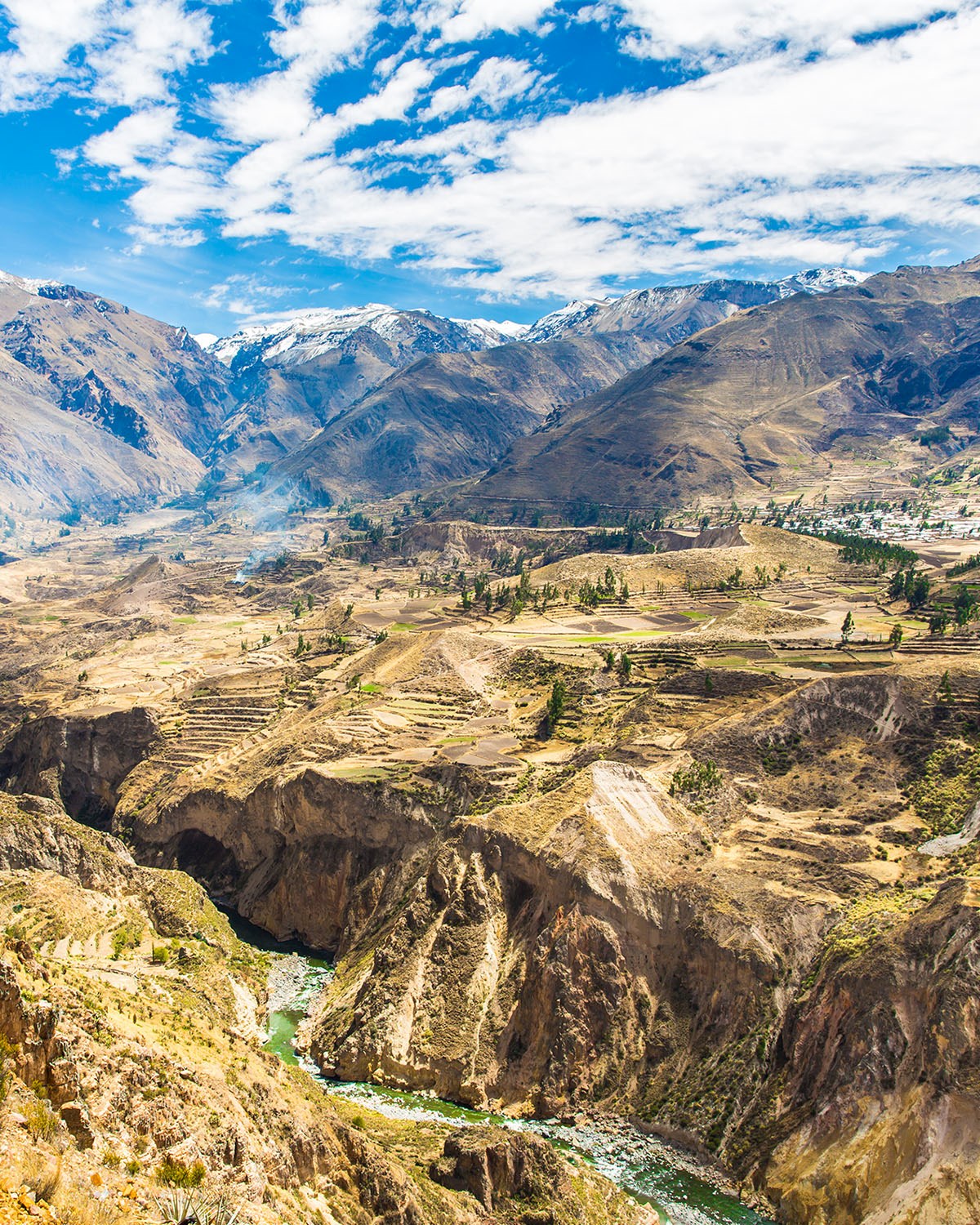 Colca Canyon, one of the world's deepest canyons - Credits: Shutterstock
Colca Canyon, one of the world's deepest canyons - Credits: Shutterstock
History and nature intertwined
As is the case with Lima, the whole Historic Center of the city has been declared a UNESCO World Heritage site for its harmonious amalgamation of baroque styles with the city's own unique architectural tradition. Central to this historic core is the grand Plaza de Armas, with the impressive neo-renaissance and gothic Basilica Cathedral of Arequipa, which houses relics and artwork from almost 500 years of the city's history.
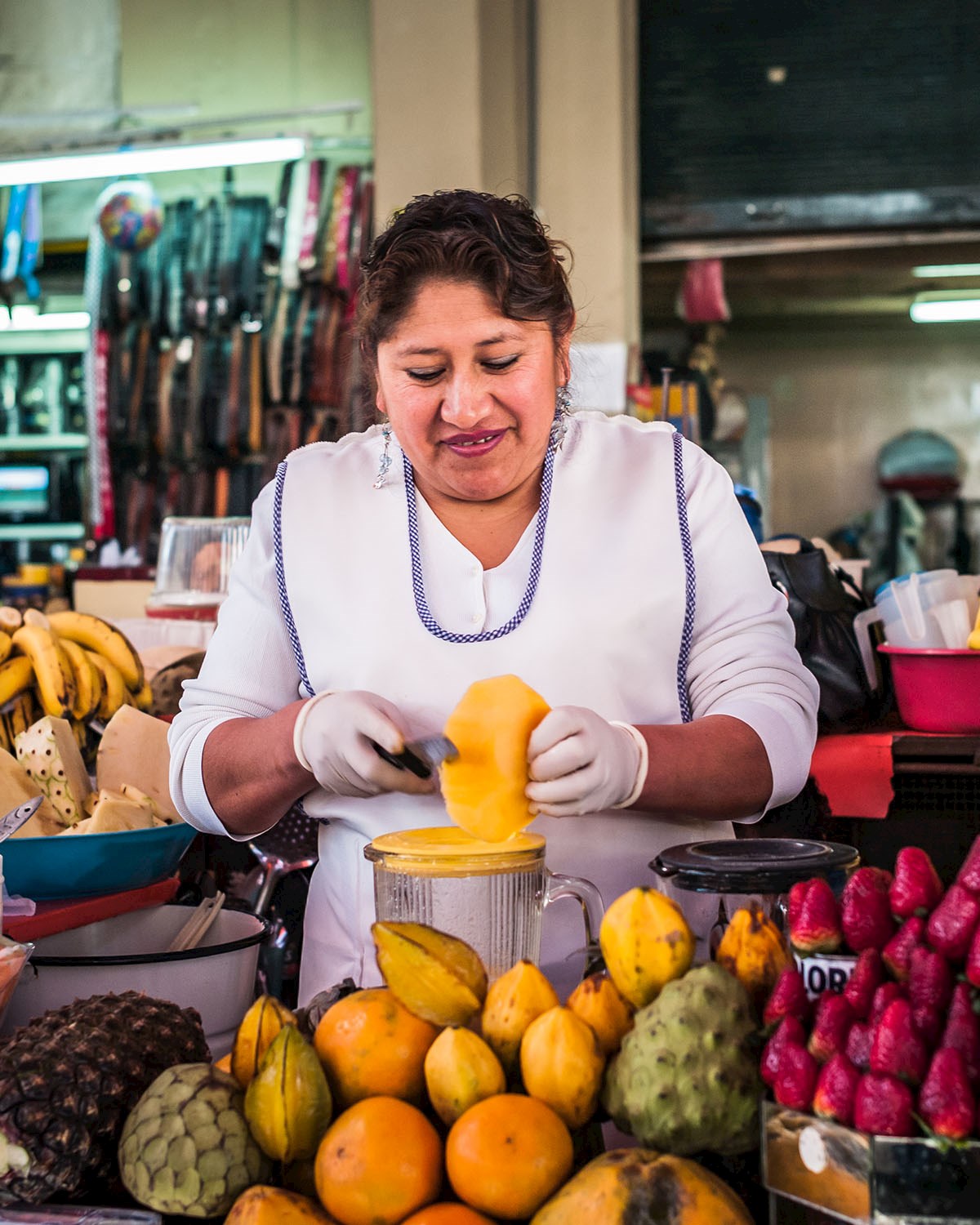 Fresh juice from the local exotic fruit is a favorite refreshment - Credits: Shutterstock
Fresh juice from the local exotic fruit is a favorite refreshment - Credits: Shutterstock
Equally stunning is the Monastery of Santa Catalina de Siena, a sort of city within the city spanning an area of 20,000 square meters. Built in 1579, it has numerous narrow streets with vividly painted walls, cloisters, and courtyards, and although it is now open for tourists, Dominican nuns still live in one part of it.
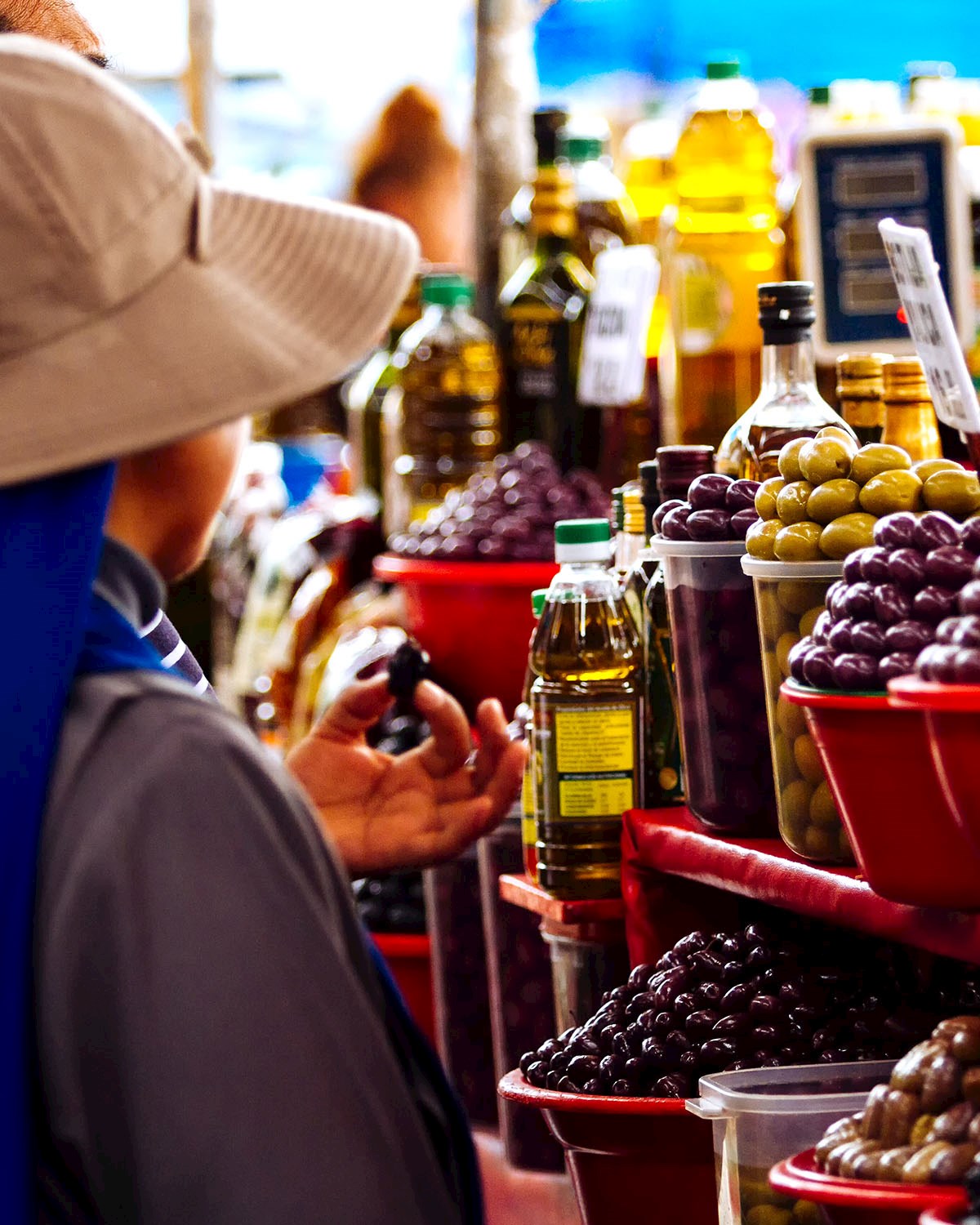 Botija olives are the most popular Peruvian olive cultivar - Credits: Shutterstock
Botija olives are the most popular Peruvian olive cultivar - Credits: Shutterstock
Near is also the historic San Lazaro district, the oldest neighborhood in Arequipa, consisting of old colonial houses built with ashlar (a type of volcanic stone), charming plazas, and flowering gardens. Although very popular with the tourists, the winding streets and alleys of this district still offer serenity and a chance to be transported some 500 years in the past.
Towering over the city, the perfectly conical silhouette of El Misti is a constant reminder of Arequipa's volcanic geography. For the adventurous, treks to the summit offer panoramic views of the city and its surrounding landscapes.
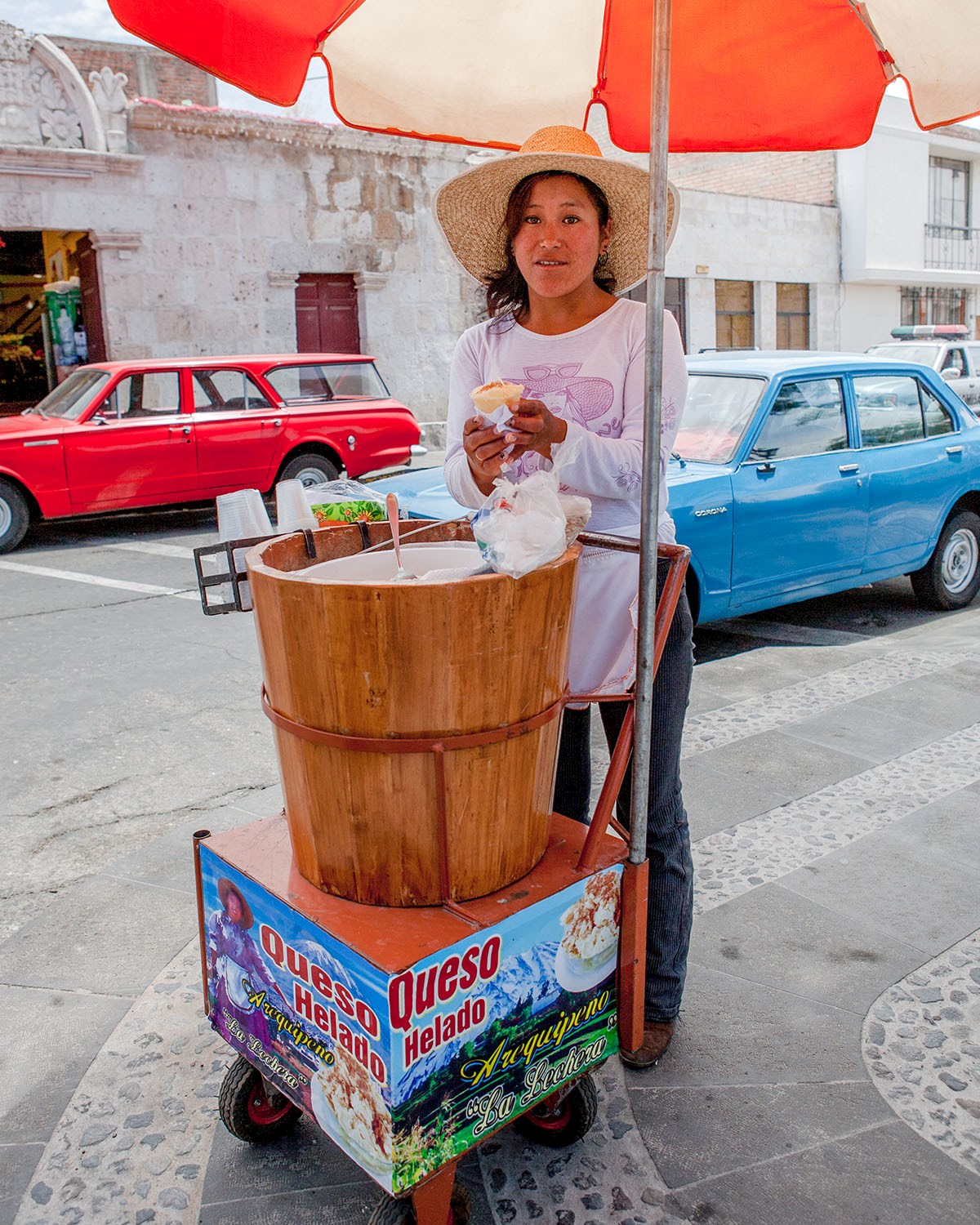 Queso helado ice cream is the most famous Arequipan dessert - Credits: Shutterstock
Queso helado ice cream is the most famous Arequipan dessert - Credits: Shutterstock
Some 160 kilometers (about 99 miles) northwest of Arequipa, one might find the mesmerizing Colca Canyon, one of the world's deepest. The vast terraced landscapes carved by the Colca River are home to descendants of Collagua and the Cabana cultures, who still cherish their ancestral traditions. While there, the Cruz del Condor viewpoint is a must-visit, and maybe witness the majestic flight of Andean condors.
And if all of this is too much activity, Yura offers just the right kind of relaxation: thermal springs that are rich in minerals and possess therapeutic properties, fit not only for nobility but for anybody who knows how to enjoy all of life's little pleasures.
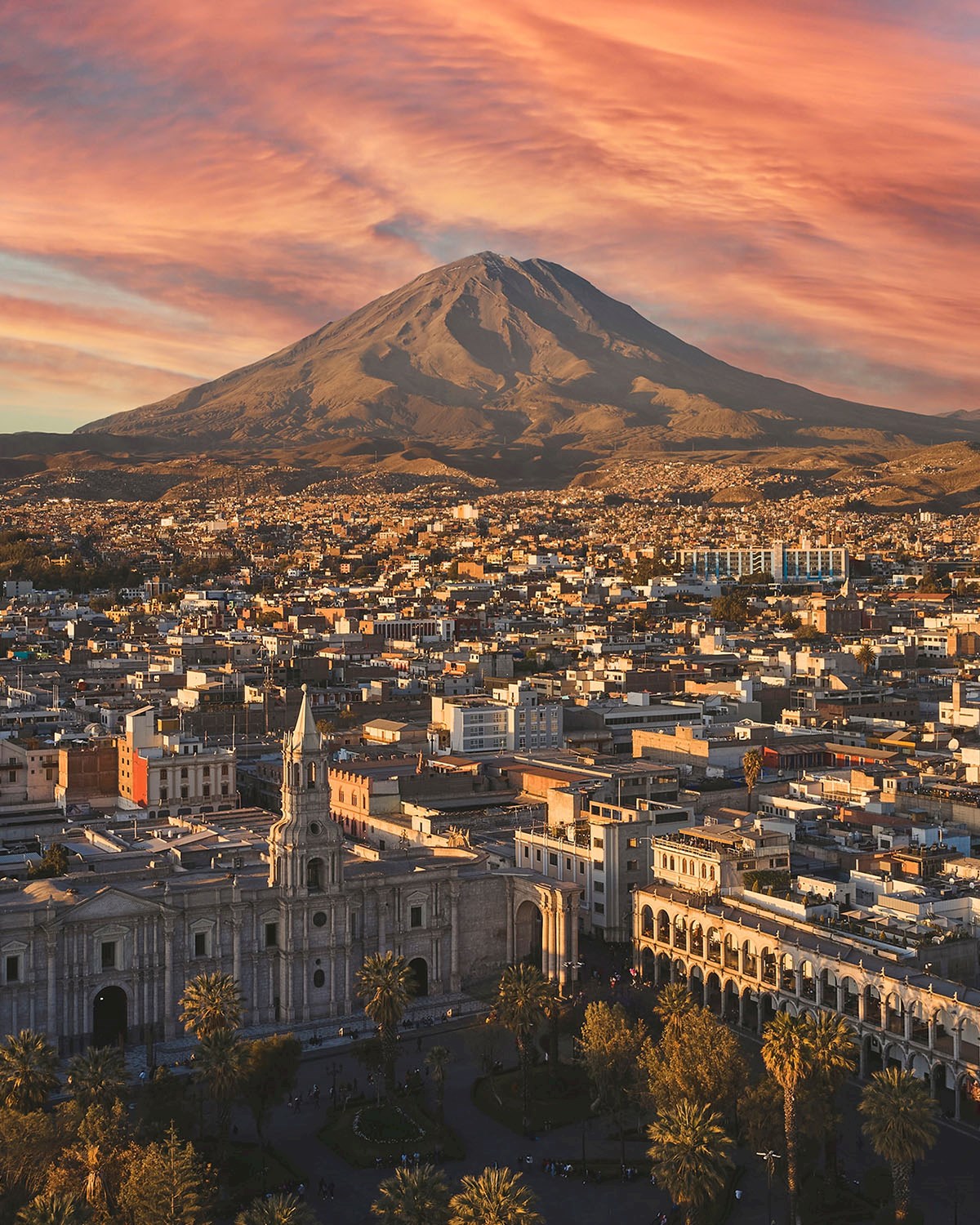 El Misti vulcano, towering over Arequipa - Credits: Shutterstock
El Misti vulcano, towering over Arequipa - Credits: Shutterstock
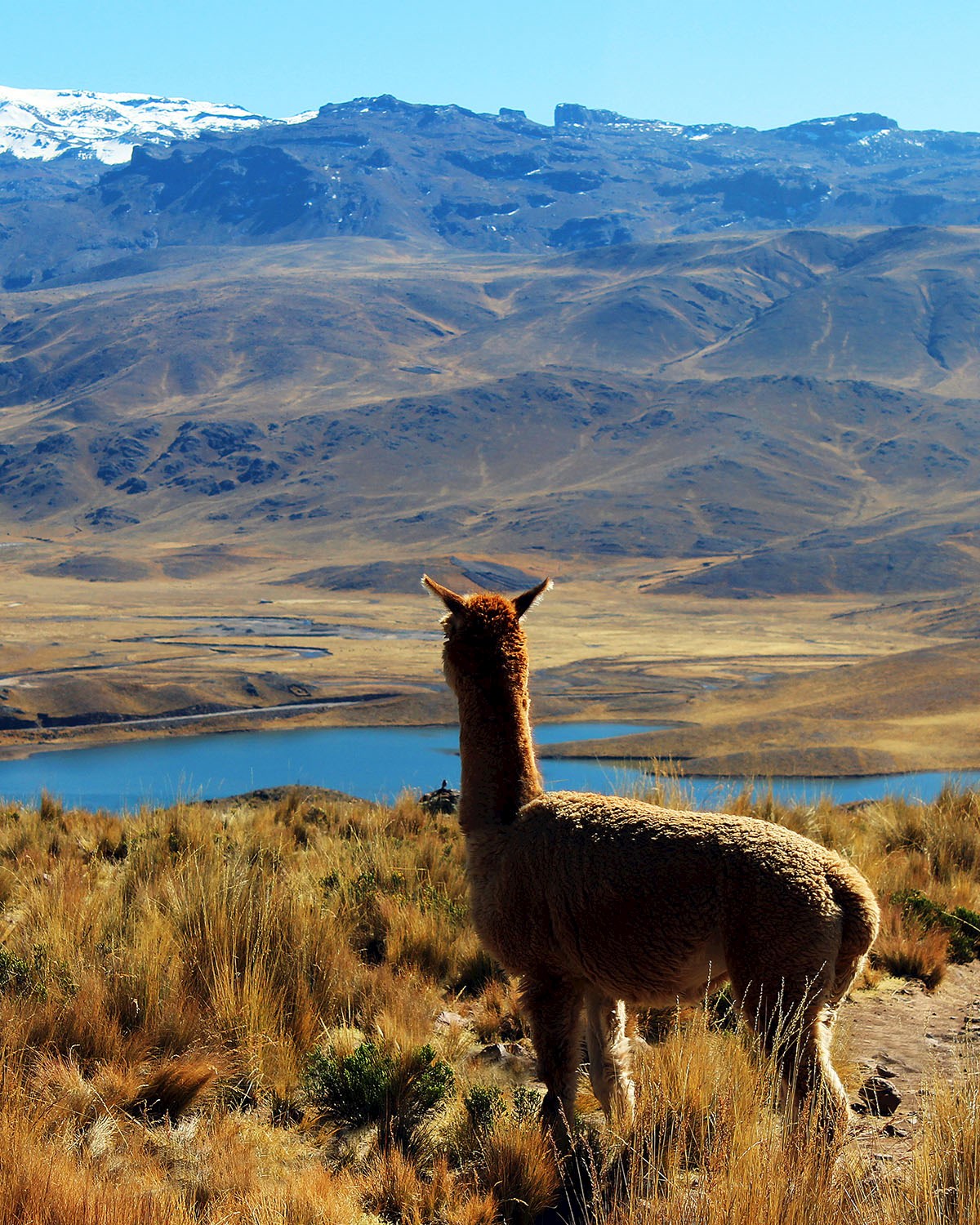 Alpacas, one of the most iconic animals of the region - Credits: Shutterstock
Alpacas, one of the most iconic animals of the region - Credits: Shutterstock
A proud culinary heritage
Arequipa's gastronomic story is deeply rooted in its multicultural past: a blend of Spanish colonial influences and ancient Andean traditions. The region's unique geography, from its fertile valleys to high-altitude plateaus, has blessed it with diverse ingredients that have, over the centuries, melded together to create an unparalleled culinary repertoire, often considered among the country's best.
 Dried frog legs are just one of the exotic things one might find in the Arequipan markets - Credits: Shutterstock
Dried frog legs are just one of the exotic things one might find in the Arequipan markets - Credits: Shutterstock
• CHUPE DE CAMARONES
Chupe de camarones is a quintessential dish from Arequipa, a creamy shrimp soup that combines the succulence of river shrimps with a base of milk, potatoes, and chili peppers. Traditionally enjoyed as a midday meal, the soup is as much a visual treat as it is a tasty one, with its vibrant colors reflecting the fresh ingredients used. A true embodiment of Arequipan gastronomy, chupe de camarones is both a comforting classic and a dish that leaves a lasting impression on every palate.
 Credits: Peru.Travel
Credits: Peru.Travel
Learn more about Chupe de camarones
• ROCOTO RELLENO
Rocoto relleno is the most famous appetizer from the Peruvian region of Arequipa, consisting of a spicy, oven-baked rocoto chili pepper stuffed with ground beef, pork, onions, and pieces of hard-boiled eggs. The stuffing is traditionally seasoned with cumin, chili paste, salt, and ground pepper. Rocoto is often served with a slice of mozzarella cheese melted on top of the stuffing, and alongside a layered potato bake called pastel de papa.
 Credits: Peru.Travel
Credits: Peru.Travel
Learn more about Rocoto relleno
• SOLTERO DE QUESO
Although there are as many versions of soltero de queso as there are cooks, this refreshing salad is usually made with a combination of lima beans, onions, tomatoes, corn, diced queso fresco, rocoto pepper, and various herbs and spices. Soltero de queso is praised because it is healthy, but also easy and cheap to make.
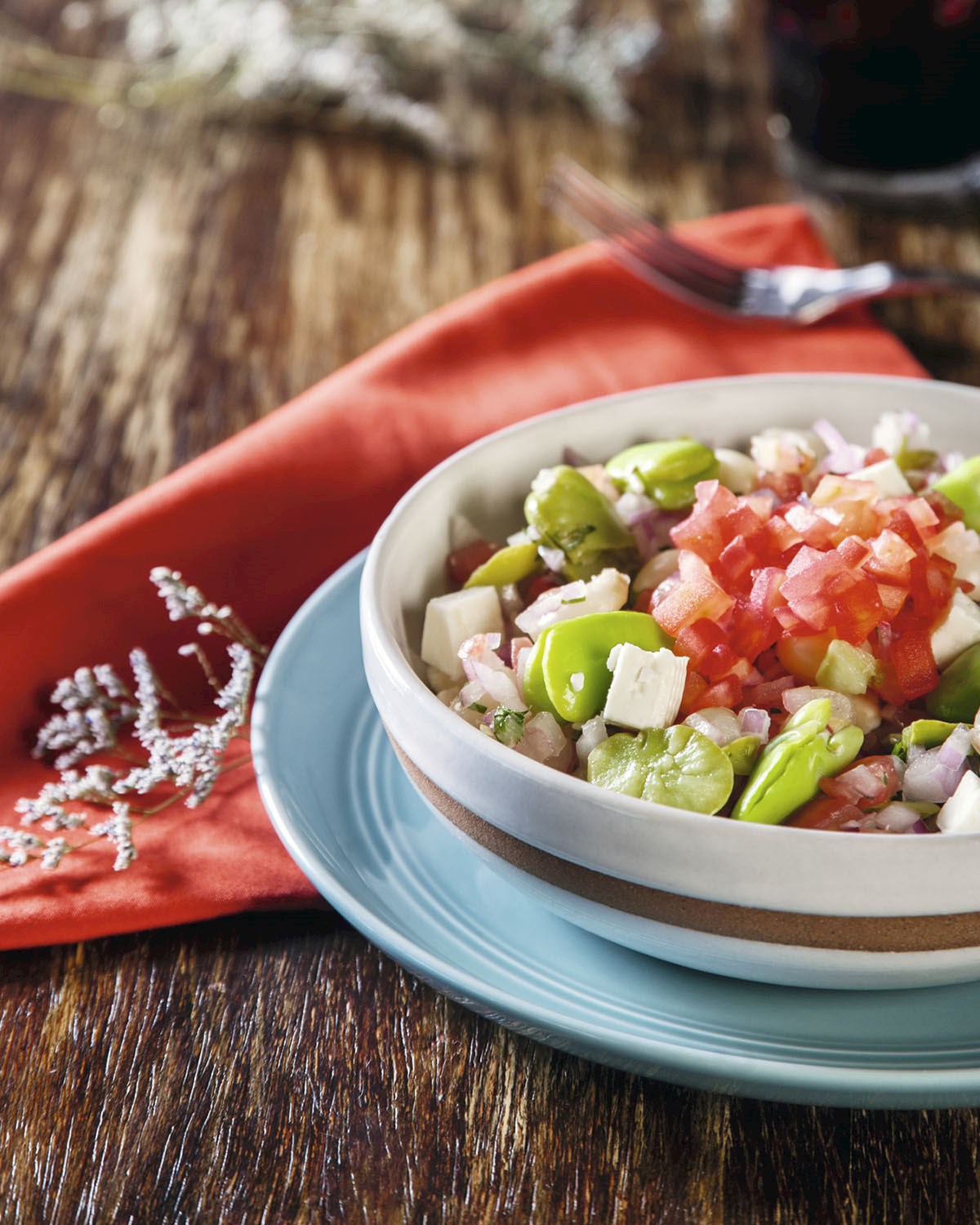 Credits: Peru.Travel
Credits: Peru.Travel
Learn more about Soltero de queso
• QUESO HELADO
Queso helado is a creamy frozen dessert that resembles ice cream, but has a distinct preparation method, involving the layering and freezing of milk with spices like cinnamon, cloves, and coconut. The name derives from its appearance, which resembles sliced fresh cheese. Often sold by street vendors, queso helado provides a delightful refreshment from the Andean sun, with its cool, velvety texture and subtle sweetness.
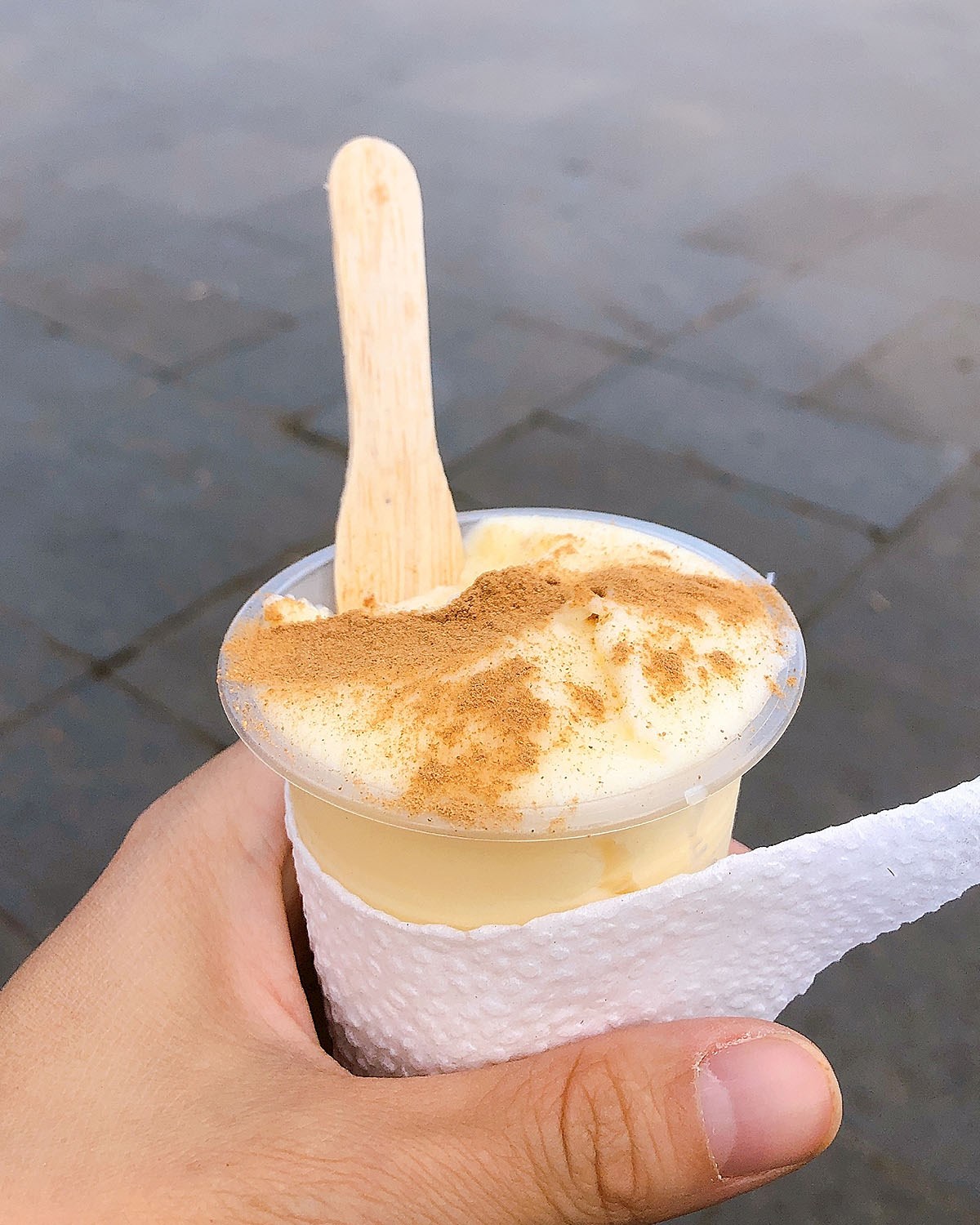 Credits: Shutterstock
Credits: Shutterstock
• ADOBO AREQUIPEÑO
Adobo Arequipeño is a hearty stew made from pork marinated in a blend of chicha de jora (corn beer), aji panca pepper, garlic, and various spices, then slowly simmered until tender. The result is a rich, deeply flavorful broth with succulent pieces of meat, usually accompanied by bread and traditionally eaten as a Sunday morning dish. Beyond its taste, Adobo Arequipeño is also a social ritual, often enjoyed in communal settings or local picanterías.
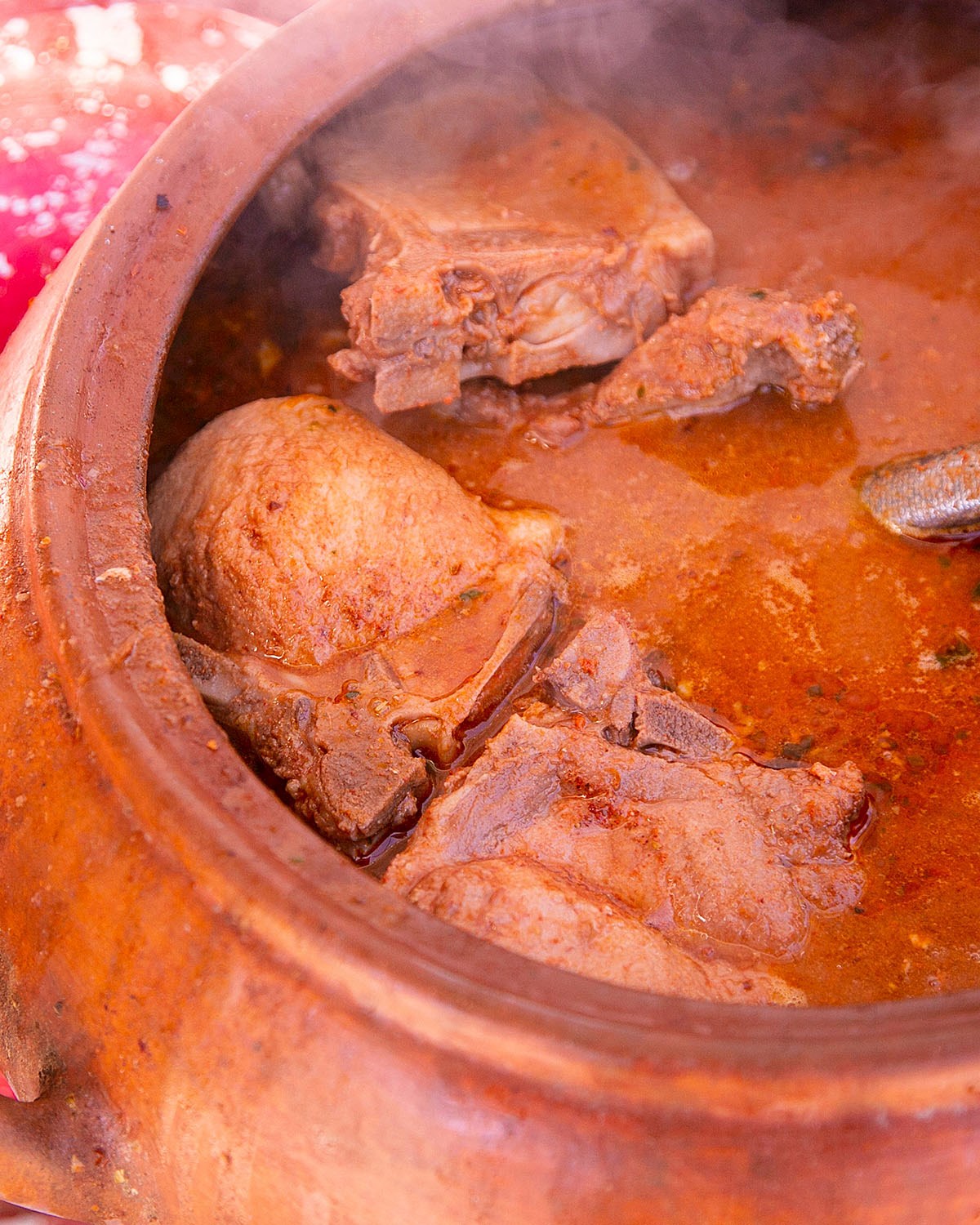 Credits: Shutterstock
Credits: Shutterstock
Learn more about Adobo Arequipeño
• SALSA OCOPA
Salsa ocopa is a traditional Arequipañ sauce made with queso fresco, aji amarillo chilis, milk, and huacatay, also known as Peruvian black mint, giving the sauce a unique flavor. The salsa is traditionally served with boiled potatoes, but it can also accompany pasta dishes, meat, fried yucca, hard-boiled eggs, or tequeños.
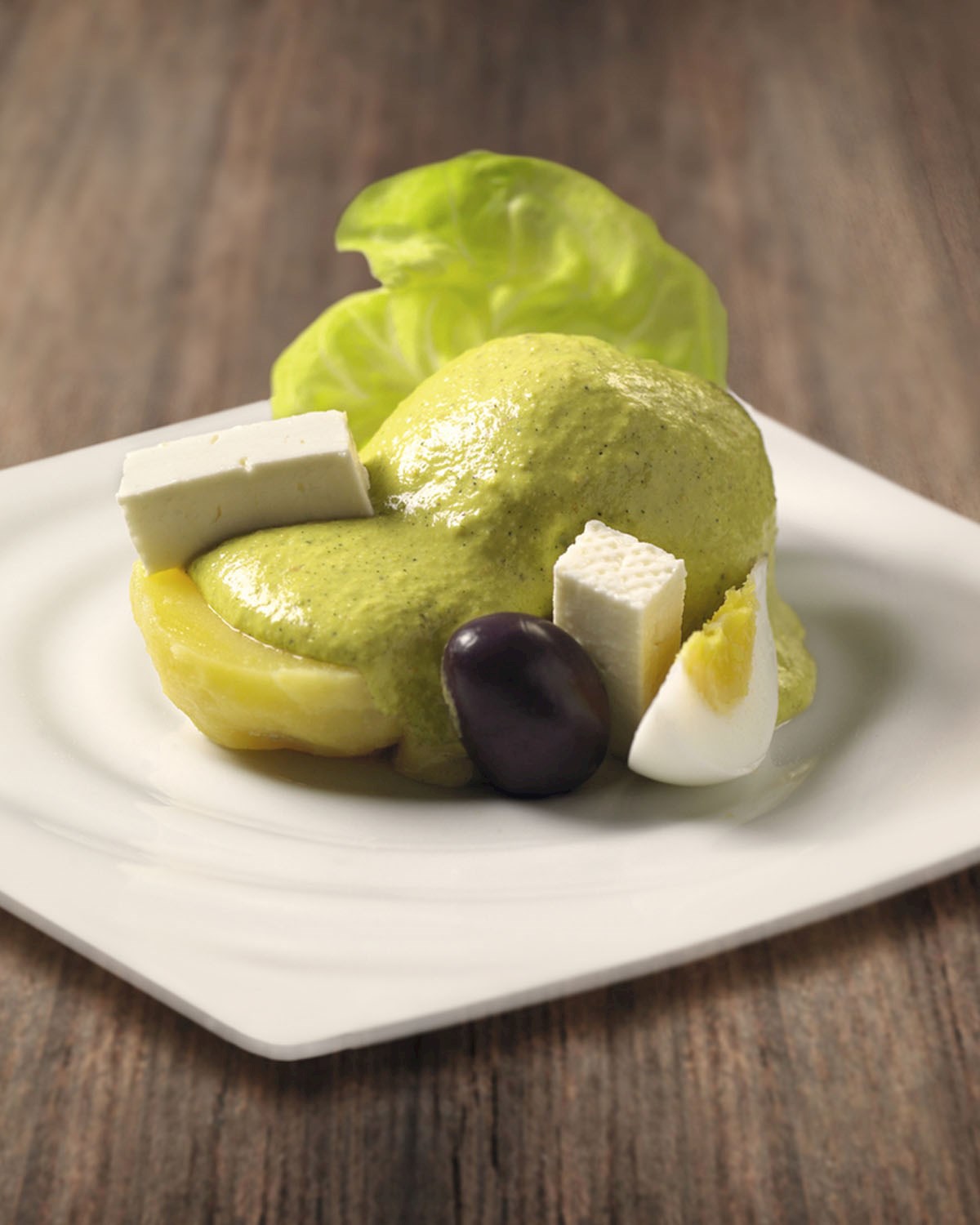 Credits: Peru.Travel
Credits: Peru.Travel
• CHICHA DE GUIÑAPO
Chicha de guiñapo is a lesser-known but culturally significant beverage hailing from the Arequipa region, made from fermented black corn. This drink has a deep purple hue, and a slightly tangy flavor, which can be both refreshing and invigorating. Common in the local picanterías, but also often made at home, can be consumed on its own, or occasionally mixed with other local drinks, offering a refreshing accompaniment to traditional Arequipan dishes.
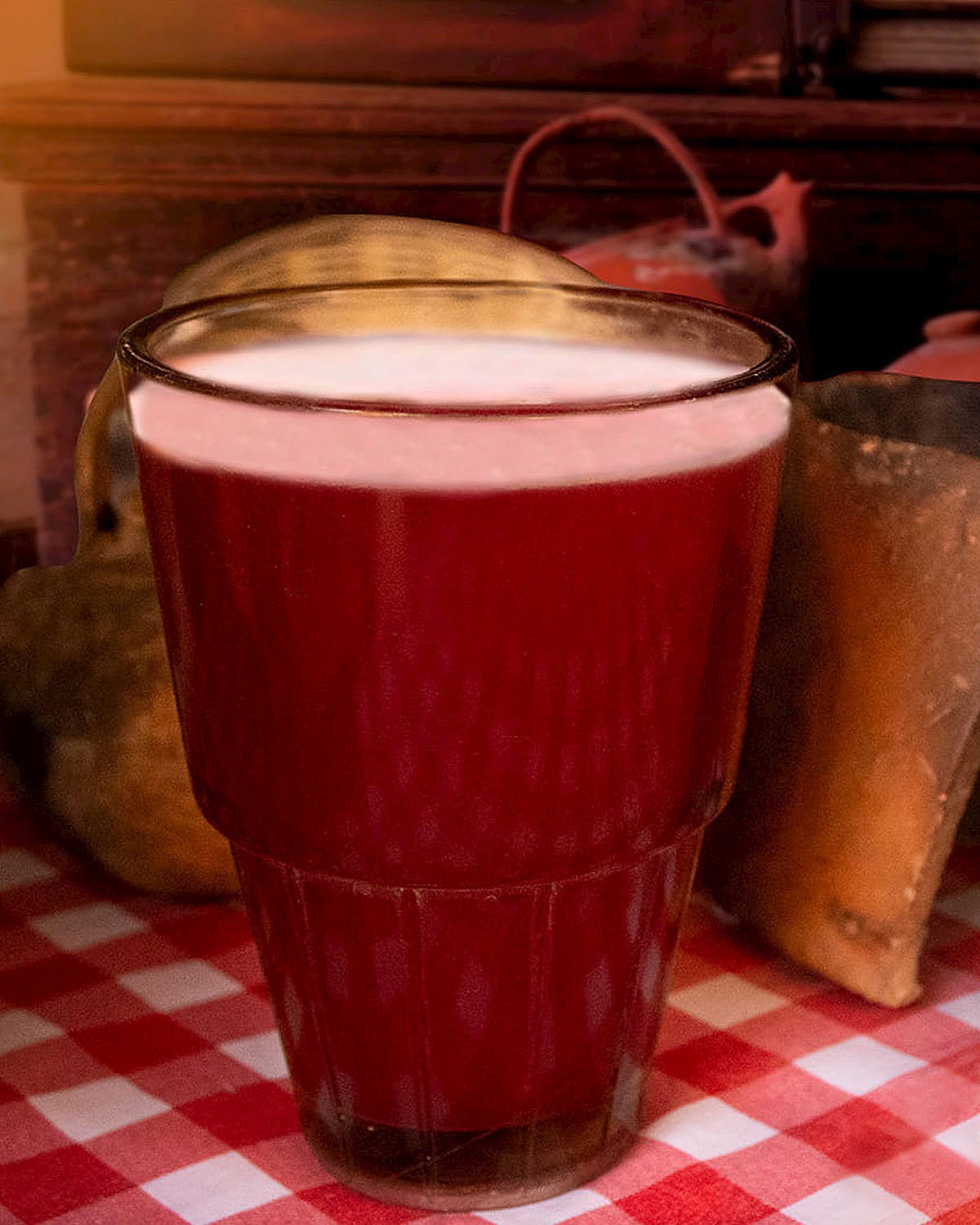 Credits: La Chaska
Credits: La Chaska
Learn more about Chicha de guiñapo
Luckily, Arequipa has plenty of excellent restaurants and street food vendors that offer traditional local dishes. La Nueva Palomino stands as a guardian of Arequipan tradition, serving dishes that represent the city's rich history, with generous portions that remind of the hearty family meals.
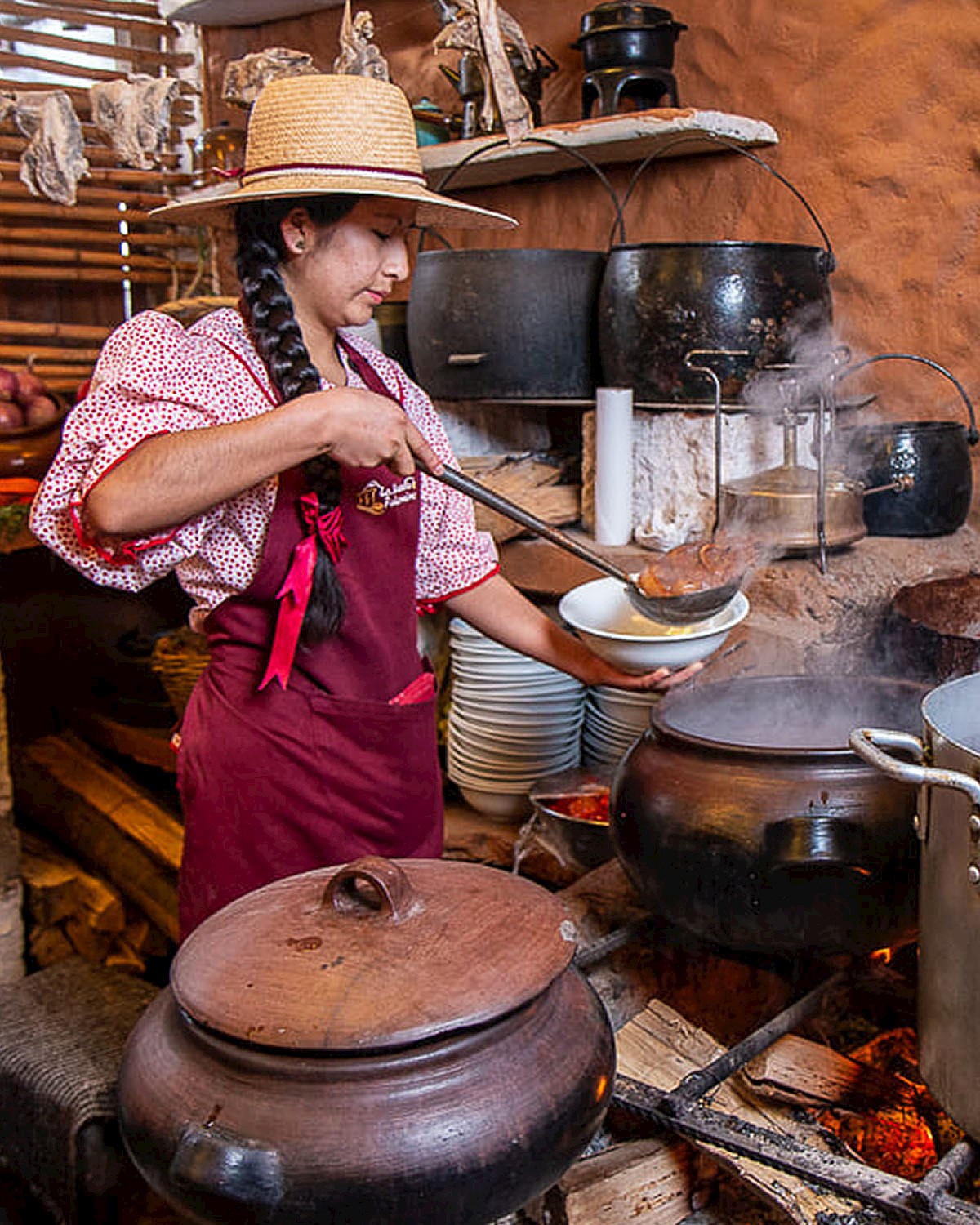 Credits: La Nueva Palomino Picantería Arequipeña
Credits: La Nueva Palomino Picantería Arequipeña
Chicha por Gaston Acurio, by the celebrated chef Gastón Acurio, combines innovation with tradition, offering a modern twist on age-old recipes. On the other side of the Rio Chili, Tío Darío welcomes diners with its sizzling grills and authentic Arequipan flavors, capturing the essence of local street food in a more refined setting.
Picantería La Capitana is the embodiment of a true picantería, a traditional lunchtime restaurant where one might follow the hearty stew with a glass of local chicha. Lastly, Restaurante Zingaro, with its versatile menu filled with Andean classics, offers a culinary journey that covers all the bases of the region's unique cuisine.
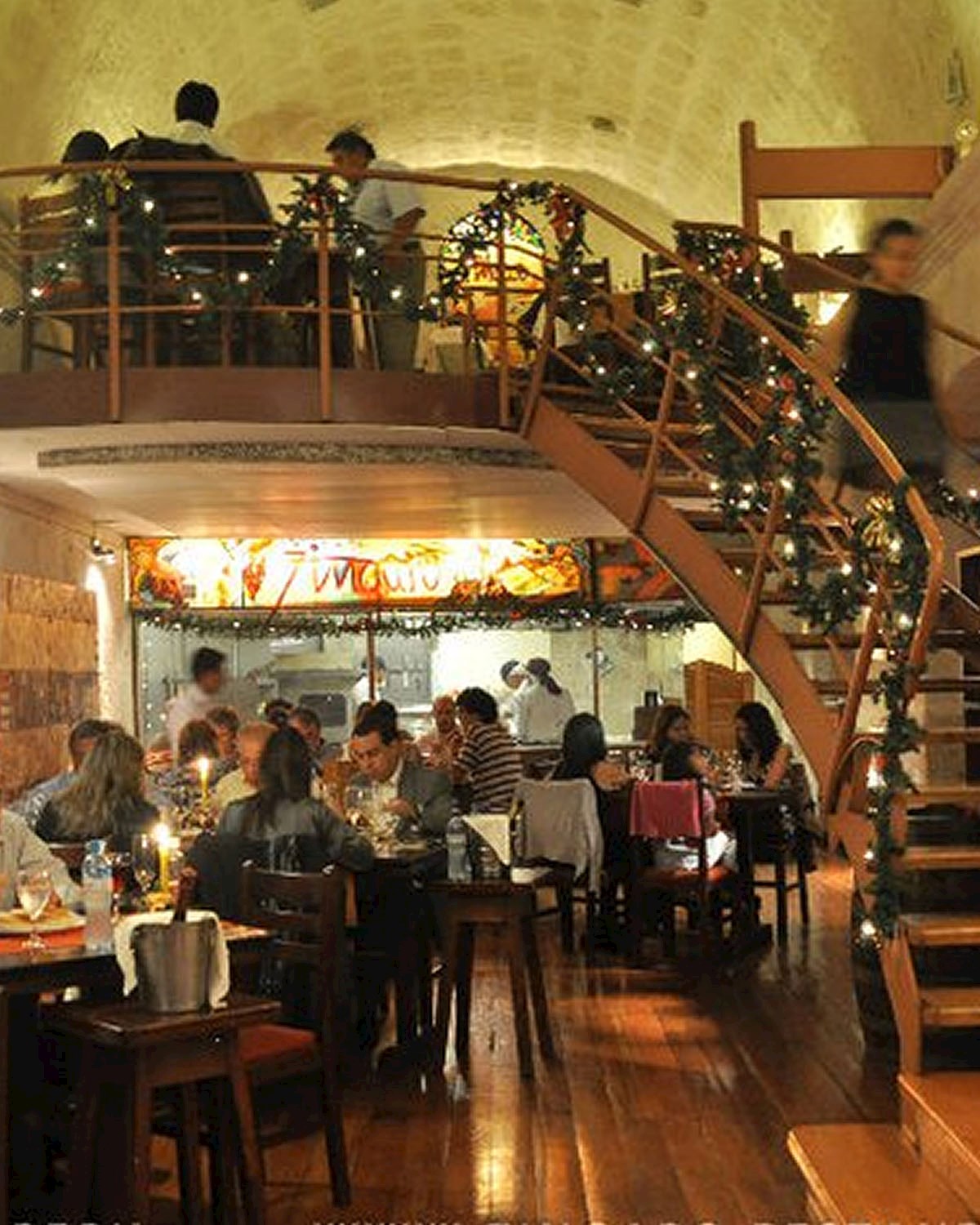 Credits: Zingaro Restaurante
Credits: Zingaro Restaurante
Each of these restaurants, in its own unique way, paints a delectable portrait of Arequipa's unmatched gastronomy.
What and where to eat in Arequipa Region
